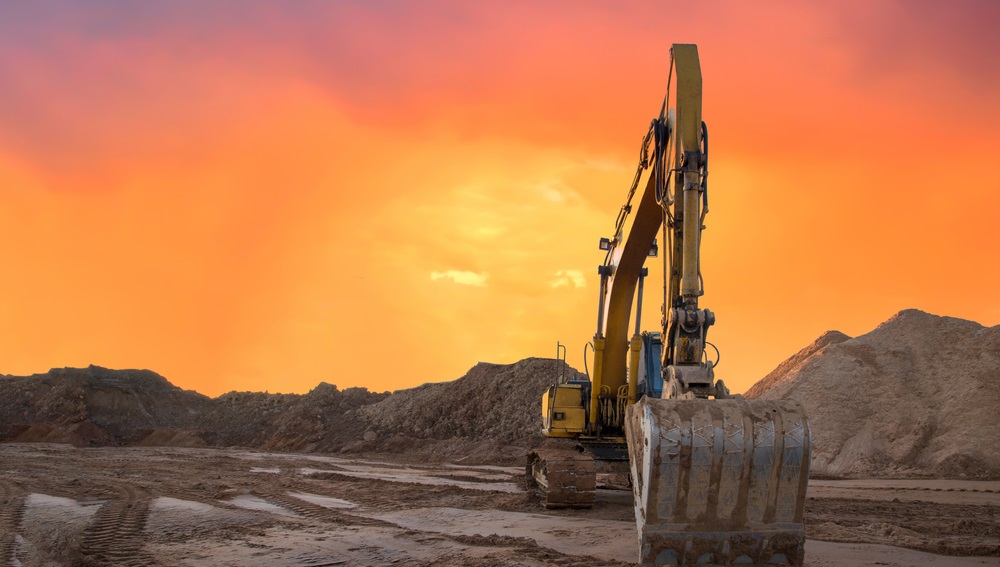As much as we can try to limit contamination or avoid building on a site with it, it is often an unavoidable evil. Remediation is often needed in large scale construction or mining sites, as well as small scale businesses like dry cleaners or service stations to remove new and existing contamination.
When businesses undergo remediation to clean up the contamination, one of the consequences of it is often disrupting the project or business through delays or closures.
The amount of disruption can vary greatly depending on:
- The amount of contamination on site
- How dispersed the contamination is
- The remediation method chosen
This article will dive into the 3rd point, discussing the various remediation options out there and which of those will minimise your site disruption.
What types of remediation projects are there?
To look closer, there are two main types of remediation projects:
- In-situ projects which mean the remediation’s happening in place and businesses aren’t moving the contaminated material around; and
- Ex-situ projects where the contaminated material is excavated if it’s contaminated soil, or pumped out of the ground in the case of groundwater contamination.
Ex-situ projects can be enormously disruptive, especially if the contamination is large enough to need to dig out the entire site.
The disruptive impacts of traditional remediation methods
Site disruptions bring serious consequences to organisations. If the contamination has occurred at a site with an active business such as a dry cleaner, service station, parking facility, or manufacturing facilities, then remediation works can force them to shut down.
Contamination at a property or infrastructure development site such as roads, tunnel or rail projects forces civil engineering projects to stall for extended periods.
The immediate consequences of this include:
- Project delays – construction sites operate on tight schedules and any delays carry heavy fines. The longer the site is disrupted, the higher the cost;
- Reputation loss – when customers see fences around a service station, they know that something’s gone wrong;
- Loss of staff – hazardous remediation works force staff off-site; and
- Loss of revenue – for large scale sites, delays can mean millions in lost revenue, and for small businesses, it can be the difference in staying alive.
In addition to the impacts of site disruption, each method of remediation has its own challenges and impacts:
While ex-situ remediation has immediate consequences like shutting down the site until the contamination is removed, ex situ remediation approaches generally have low credibility when it comes to economic, social and environmental sustainability. Excavating contaminated soil and transferring it to a treatment or landfill facility is costly, energy intensive, and generally meets with opposition from communities through which contaminated material is transported and communities living near landfill sites. Groundwater pump and treat systems are costly with respect to capital and operational expenditure, energy intensive and involve unsightly above ground infrastructure with large physical footprints.
For in-situ remediation, traditional chemical (e.g. in situ chemical oxidation) and physical (e.g. thermal desorption) methods can pose significant risks to human (business staff and remediation practitioners) and environmental health (climate, sensitive ecosystems). Strong oxidants pose health and safety risks. Thermal processes need significant energy investment. Both cause disruption of the natural ecosystem, effectively sterilising soil and groundwater thereby destroying the foundational ecosystem services microorganisms provide. Approaches that involve volatilisation of contaminants can also result in exposure to vapours requiring additional above ground safety precautions.
Bioremediation, as an alternative, can be deployed as a standalone solution for many sites or in a treatment train for others to reduce negative impacts of over engineered remediation approaches and improve sustainability credentials of a remediation project.
How bioremediation reduces site disruption
Bioremediation falls into the in-situ remediation category, and it utilises biological sources like bacteria to destroy contamination.
Bioremediation can be likened to keyhole surgery compared to other remediation technologies which are more akin to traditional surgery. It’s far less disruptive and it carries many benefits like:
- Being safer to use – amendments for bioremediation are typically benign, so there are limited safety risks, meaning sites can continue operating;
- Being less invasive – bioremediation doesn’t require sites to be excavated or disturbed on a large scale to inject the solution, so there’s minimum damage to the site; and
- Being environmentally friendly – bioremediation works with the natural environment and is far gentler on the ecology of the site. For the many organisations needing to abide by strict ESG requirements, bioremediation will be the preferred solution.
One business that utilised bioremediation recently with the help of Novorem is Lawrence Dry Cleaners in Sydney, which was affected by an underground trichloroethylene spill which was impacting groundwater and migrating off site in dissolved phase plumes.
The business decided that bioremediation would be the optimal solution because remediation workers could go into the site, drill wells through the concrete floor, and inject amendments into groundwater beneath the business without disrupting operations. The business was able to keep running throughout the process.
But while bioremediation carries significant benefits, the site conditions need to be able to support biological activity, and in many cases, it takes longer to remediate the site through this method. We’ve previously written an article about how to make bioremediation work for you if you want to learn more about this aspect of bioremediation.
How to get the most out of bioremediation
To ensure your bioremediation project runs smoothly, intelligent site characterisation is required to develop a high quality conceptual site model enabling risk based derivation of a site management or remediation action plan.
Your entire remediation plan will be based on this model, and intelligent site characterisation will help you understand your site accurately and prevent you from over-engineering the infrastructure for field interventions and monitoring.
Without an understanding of your site and the location of the contamination, you risk overspending on injection and monitoring wells. For example, instead of putting in 100 wells to cover your bases if you don’t know where the contamination is, you could put in 10 because you do know exactly where the contamination is.
This reduces the cost of putting in wells, which carries over to reducing the cost of monitoring and analysing samples from too many wells.
Intelligent site characterisation can also help you locate the source zone of the contamination, where contaminant concentrations are highest in the location of the spill, and then target it.
Reduce site disruption with a helping hand from Novorem
Remediation can have significant adverse effects on your business or site – but there are ways to avoid it with less invasive bioremediation solutions. If you’re considering this option or have already decided on it, it’s crucial to have a plan and clear understanding of the entire project
Novorem has expertise to support bioremediation projects – we’re aware of the need to minimise site disruption and can offer solutions that are minimally intrusive.
Our services include the supply of microorganisms and nutrient formulations to stimulate the right biological activity, and analytical expertise that requires small sample volumes obtained through unobtrusive sampling procedures.
To learn more about how we can assist you to improve bioremediation results and treatment plan construction, don’t hesitate to reach out via our contact form or email us at info@novorem.com.au.


